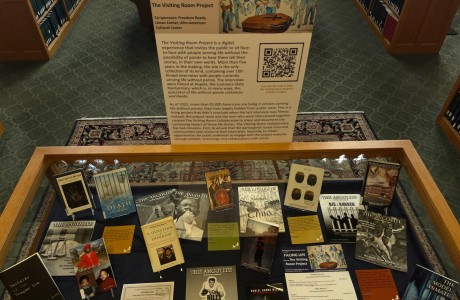Conducting Canadian Legal Research: an Introduction for the American Law Student
This is a very brief introduction to Canadian legal research mainly designed for the American law school student. More information and more in-depth guides can be found at the links at the end of this post.
For a researcher familiar with conducting legal research with American legal materials, Canadian legal research can, in many ways, feel familiar. Both are common law jurisdictions with a federal structure and an important supreme court. There are enough differences, however, that an American researcher should be careful to understand the material that they find and the place held by the producer of the information in the Canadian legal system.

As with most legal research problems, a non-expert will most likely want to start their Canadian research in a secondary source. To an American, the types of secondary sources available will feel familiar.
To find out about the basic laws governing most situations or to understand where a legal concept fits in the Canadian legal system, most researchers will want to start with a legal encyclopedia. There are two important legal encyclopedias in common use in Canada.
- Halsbury’s Laws of Canada is a multivolume encyclopedic treatment of Canadian law. Halsbury’s provides researchers with a short “black letter” statement of the law and will provide references to some relevant Acts, cases, and administrative law. Halsbury’s is available in some American law libraries and on the Canadian legal research service QuickLaw (from Lexis). Halsbury’s is generally not available under the typical Academic Lexis subscription in the United States.
- The Canadian Encyclopedic Digest is a multivolume service that acts as both an encyclopedia and a digest of the law. The CED (Western and Ontario) is available on Westlaw and the print version is available in some American law libraries.
The search for topical Canadian legal treatises will feel comfortable for the American legal researcher. The same sort of library catalog searches that will find American treatises will find Canadian treatises as well. In addition, many of the same publishers are active in both jurisdictions. The only real differences in the research are that the material will be classified under the KE letters in most libraries and that “Canada” should be used in the subject headings rather than “United States”. The guidebooks for treatises that have been appearing in the United States are not as prevalent in Canada. Note well the treatises that are available on Westlaw. The versions of Quicklaw and Lexis available under the United States academic licenses do not contain many Canada-specific treatises.
Searching for Canadian law reviews is almost exactly the same as looking for American law reviews. The same resources will cover many of the law reviews. Westlaw, Lexis, and Quicklaw have the full text of many of the law reviews published in Canada. Also, the American periodical indexes, Index to Legal Periodicals and Books, and LegalTrac both cover many Canadian Journals. Hein Online also includes many Canadian Journals. One final resource that an American researcher might consider is the Index to Canadian Legal Literature that is available at some American libraries and on Westlaw.

Halsbury's Laws of Canada
As in the United States, the Canadian federal government and the Canadian provinces pass legislation. At the federal level, Canadian legislation is occasionally consolidated in a “revision”. The most recent revision of the Canadian statutes was in 1985. Westlaw, Quicklaw, the Department of Justice and CanLII provide electronic access to Federal legislation and the most recent Consolidation. To find amendments to legislation, a researcher should first check the “Table of Public Statutes” in revision that they are using. These are usually updated every six months and include any amendments since the revision. The Canadian Abridgement, discussed below, contains an annual listing of legislation that includes information about which prior acts were amended and how. There are also several other research tools that may be available, such as CCH’s Canadian Legislative Pulse, which tracks legislation.
Canadian case law research is a little different than case law research in the United States. As in the United States, most appellate cases, Provincial and federal, can be found in an online database provided by Westlaw, Quicklaw (Lexis), and Lexis. Also the cases of the federal courts and Provincial courts are published in various print reporters that may be available in an American Law Library. Some of the more common reporters are: Supreme Court Reports (S.C.R.), Federal Court Reports (F.C.), Dominion Law Reports (D.L.R.), Western Weekly Reports (W.W.R.).
In addition, there are several topical collections of cases. Some of these are available online and others can be found in a law library catalog, using a subject search for reports and a subject search for the subject of interest.
Identifying Canadian cases entails some of the same issues and difficulties that case finding in the United States does. After secondary sources and citators, the next tool to consider is the Canadian Abridgement. This resource contains many parts, including the annual legislative update mentioned above and a citator. The part of interest here is the classification system for parts of cases. This system works much like the West Topic and Key Number system to describe the legal issue in a part of the case. By using the Canadian Abridgement in print or on Westlaw, a researcher can take the Canadian Abridgement reference number and find additional cases on the same topic. The Canadian Abridgement is available online on Westlaw.
One difference between Canadian cases and American cases should be noted. Canadian federal cases, other than the cases from the Supreme Court of Canada, are important only in the limited areas of their jurisdiction. Canadian Federal courts are empowered in only limited subjects, including: copyright, maritime law, and actions against the Crown. The provincial and federal courts are in three levels with the Supreme Court of Canada as the top level for both systems. Historical researchers may wish to note that before 1949, appeal to the Privy Council was available from a Supreme Court ruling.
As in the United States, ministries in the federal and provincial governments create regulations to fill out the legislation. Federal regulations are gathered and published in the Consolidated Regulations of Canada. Prior to inclusion in the consolidation, regulations are first published in the Canadian Gazette. Federal Regulations are also available on Westlaw. Quicklaw, and Lexis. Those sources also have selected Provincial regulations. Federal and provincial regulations are also available at the web sites of the Department of Justice and Provincial web site. Here, for example are the consolidated regulations of Nova Scotia. A Google search should find the provincial regulations.
There are several excellent guides to Canadian legal research. For more detail a researcher may wish to consult Best’s Guide to Canadian Legal Research, Doing Legal Research in Canada from LLRX, or Researching Canadian Law from GlobaLex.


